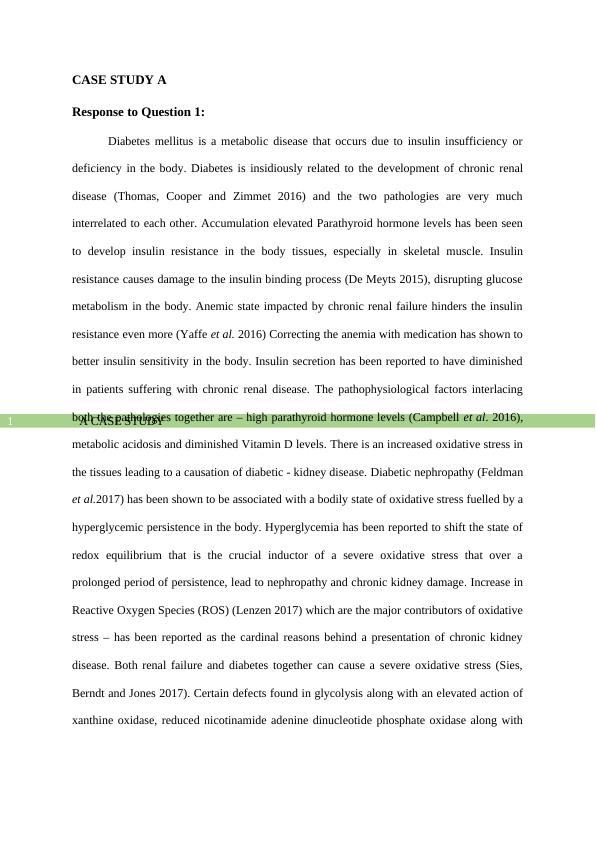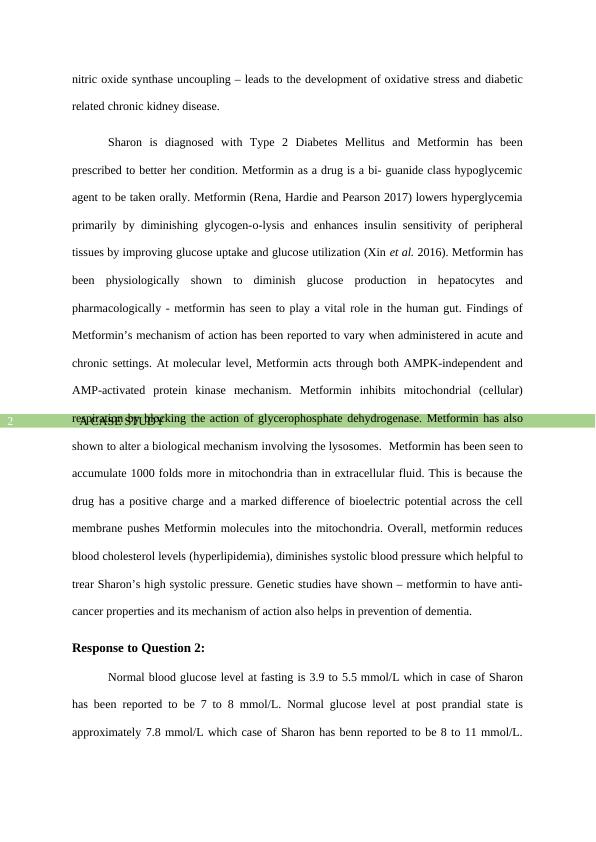Diabetes Mellitus and Chronic Kidney Disease: A Case Study
The task requires the application of pathophysiological and pharmacological concepts to a case study, focusing on safe medication administration and new medication design. It also involves the application of ethical codes and standards of practice in nursing or midwifery, as well as evidence-based argumentation and justification of decisions. The referencing style to be used is Harvard referencing style.
Added on 2022-12-08
About This Document
Diabetes Mellitus and Chronic Kidney Disease: A Case Study
The task requires the application of pathophysiological and pharmacological concepts to a case study, focusing on safe medication administration and new medication design. It also involves the application of ethical codes and standards of practice in nursing or midwifery, as well as evidence-based argumentation and justification of decisions. The referencing style to be used is Harvard referencing style.
Added on 2022-12-08
End of preview
Want to access all the pages? Upload your documents or become a member.



